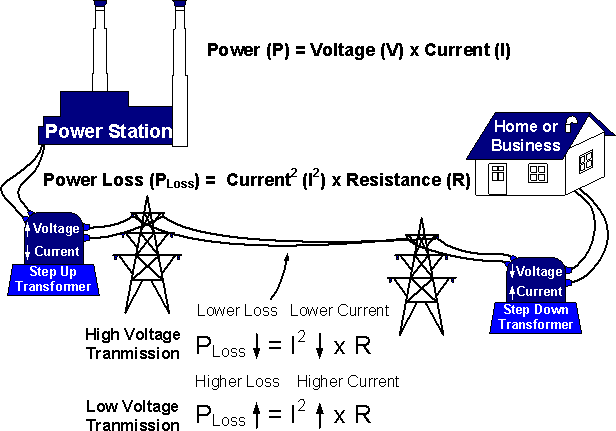High Voltage Power Lines
AC-Circuits > High Voltage Power Lines
Electrical Power Transport is a process for delivering Electricity to consumers, Figure 1.

Figure 1: Electrical Power Transport
In an Electrical Power Station, the Power, P, produced is constant. Since P = V x I, the Current flowing in the Power Transport Lines depends on the Voltage level chosen for the transport.
Power Transport Lines are usually good conductor. Nevertheless, they still have some Resistance, RLoss. The Resistive Loss, PLoss, in the Lines is directly proportional to the square of the Current flowing through it,
PLoss = RLoss x I2
In Power Transport System with Transformers, the Voltage is increased to a high level by the Transformer, the Current in the Power Transport Lines becomes small and the Power Loss becomes small too. In Power Transport System without Transformers, the Voltage level is not increased, the Current is large and the Power Loss is also large.
Long distance transport is typically done with overhead Power Transport Lines at Voltages between 110 kV and 800 kV.
AC-Circuits > High Voltage Power Lines
